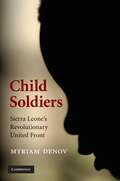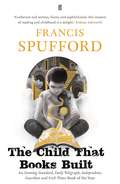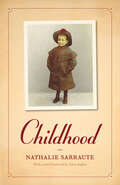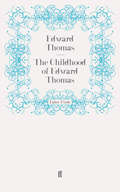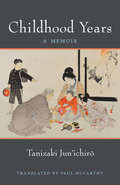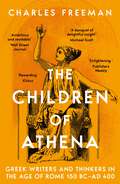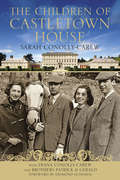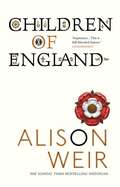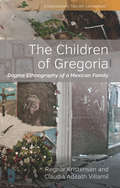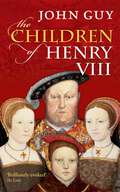- Table View
- List View
Child of the Holocaust: A Jewish Child in Christian Disguise
by Jack KuperWhat would you do if, at nine years of age, you arrived home to find your family and friends had disappeared, rounded up by the Nazis? Jack Kuper lived this nightmare, and Child of the Holocaust is the suspenseful true story of his desperate attempts to survive persecution and extermination in Poland. Forced to abandon his Jewish upbringing and disguise his true identity to hide from the death squads, Jack grew up a stranger in his own skin. Initially finding refuge with a local family, Jack's youthful tenderness for daughter-of-the-house Genia belies the terrifying aggression and virulent destruction outside. Eventually turned out by a loving foster mother in fear for her family's life, Jack wandered the treacherous Polish soil. This is his unforgettable account of suffering and, ultimately, survival in the face of the most extreme privation and hatred. For this new edition of a lost classic, Jack Kuper has revisited the manuscript for the first time since he wrote it more than forty years ago, adding new material and including the real names of those who helped him.
Child of the North: Memories Of A Northern Childhood
by Piers DudgeonA fascinating insight into the life of one of the country's bestselling and best-loved authors, marrying her work with her extraordinary life, and looking at her rise to fame and fortune against all the odds.
Child Soldiers: Sierra Leone's Revolutionary United Front
by Myriam DenovTragically, violence and armed conflict have become commonplace in the lives of many children around the world. Not only have millions of children been forced to witness war and its atrocities, but many are drawn into conflict as active participants. Nowhere has this been more evident than in Sierra Leone during its 11-year civil war. Drawing upon in-depth interviews and focus groups with former child soldiers of Sierra Leone's rebel Revolutionary United Front, Myriam Denov compassionately examines how child soldiers are initiated into the complex world of violence and armed conflict. She also explores the ways in which the children leave this world of violence and the challenges they face when trying to renegotiate their lives and self-concepts in the aftermath of war. The narratives of the Sierra Leonean youth demonstrate that their life histories defy the narrow and limiting portrayals presented by the media and popular discourse.
The Child that Books Built: A Memoir Of Childhood And Reading
by Francis SpuffordChildren's books - from Narnia to The Hobbit - are celebrated in this enlightened examination of the joys of childhood reading.Fairy tales and Where the Wild Things Are, The Lord of the Rings and the Narnia books, Little House on the Prairie and The Earthsea Trilogy. What would you find if you went back and re-read your favourite books from childhood? Francis Spufford discovers both delight and sadness, in this widely celebrated memoir of a boy who retreats into books, faced with a tragedy in his family.'A beautifully composed and wholly original memoir, sounding the classics of children's literature.' David Sexton, Evening Standard'Exuberant and serious, funny and sophisticated, this memoir of reading and childhood is a delight.' Andrea Ashworth
Childhood (Penguin Modern Classics)
by Tove DitlevsenThe first volume in The Copenhagen Trilogy, the searing portrait of a woman's journey through love, friendship, ambition and addiction, from one of Denmark's most celebrated twentieth-century writersTove knows she is a misfit, whose childhood is made for a completely different girl. In her working-class neighbourhood in Copenhagen, she is enthralled by her wild, red-headed friend Ruth, who initiates her into adult secrets. But Tove cannot reveal her true self to her or to anyone else. For 'long, mysterious words begin to crawl across my soul', and she comes to realize that she has a vocation, something unknowable within her - and that she must one day, painfully but inevitably, leave the narrow street of her childhood behind.Childhood, the first volume in The Copenhagen Trilogy, is a visceral portrait of girlhood and female friendship, told with lyricism and vivid intensity.
Childhood
by Nathalie SarrauteAs one of the leading proponents of the nouveau roman, Nathalie Sarraute is often remembered for her novels, including The Golden Fruits, which earned her the Prix international de litterature in 1964. But her carefully crafted and evocative memoir Childhood may in fact be Sarraute’s most accessible and emotionally open work. Written when the author was eighty-three years old, but dealing with only the first twelve years of her life, Childhood is constructed as a dialogue between Sarraute and her memory. Sarraute gently interrogates her interlocutor in search of her own intentions, more precise accuracy, and indeed, the truth. Her relationships with her mother in Russia and her stepmother in Paris are especially heartbreaking: long-gone actions are prodded and poked at by Sarraute until they yield some semblance of fact, imbuing these maternalistic interactions with new, deeper meaning. Each vignette is bristling with detail and shows the power of memory through prose by turns funny, sad, and poetic. Capturing the ambience of Paris and Russia in the earliest part of the twentieth century, while never giving up the lyrical style of Sarraute’s novels, this book has much to offer both memoir enthusiasts and fiction lovers.
Childhood
by Nathalie SarrauteAs one of the leading proponents of the nouveau roman, Nathalie Sarraute is often remembered for her novels, including The Golden Fruits, which earned her the Prix international de litterature in 1964. But her carefully crafted and evocative memoir Childhood may in fact be Sarraute’s most accessible and emotionally open work. Written when the author was eighty-three years old, but dealing with only the first twelve years of her life, Childhood is constructed as a dialogue between Sarraute and her memory. Sarraute gently interrogates her interlocutor in search of her own intentions, more precise accuracy, and indeed, the truth. Her relationships with her mother in Russia and her stepmother in Paris are especially heartbreaking: long-gone actions are prodded and poked at by Sarraute until they yield some semblance of fact, imbuing these maternalistic interactions with new, deeper meaning. Each vignette is bristling with detail and shows the power of memory through prose by turns funny, sad, and poetic. Capturing the ambience of Paris and Russia in the earliest part of the twentieth century, while never giving up the lyrical style of Sarraute’s novels, this book has much to offer both memoir enthusiasts and fiction lovers.
Childhood
by Nathalie SarrauteAs one of the leading proponents of the nouveau roman, Nathalie Sarraute is often remembered for her novels, including The Golden Fruits, which earned her the Prix international de litterature in 1964. But her carefully crafted and evocative memoir Childhood may in fact be Sarraute’s most accessible and emotionally open work. Written when the author was eighty-three years old, but dealing with only the first twelve years of her life, Childhood is constructed as a dialogue between Sarraute and her memory. Sarraute gently interrogates her interlocutor in search of her own intentions, more precise accuracy, and indeed, the truth. Her relationships with her mother in Russia and her stepmother in Paris are especially heartbreaking: long-gone actions are prodded and poked at by Sarraute until they yield some semblance of fact, imbuing these maternalistic interactions with new, deeper meaning. Each vignette is bristling with detail and shows the power of memory through prose by turns funny, sad, and poetic. Capturing the ambience of Paris and Russia in the earliest part of the twentieth century, while never giving up the lyrical style of Sarraute’s novels, this book has much to offer both memoir enthusiasts and fiction lovers.
Childhood
by Nathalie SarrauteAs one of the leading proponents of the nouveau roman, Nathalie Sarraute is often remembered for her novels, including The Golden Fruits, which earned her the Prix international de litterature in 1964. But her carefully crafted and evocative memoir Childhood may in fact be Sarraute’s most accessible and emotionally open work. Written when the author was eighty-three years old, but dealing with only the first twelve years of her life, Childhood is constructed as a dialogue between Sarraute and her memory. Sarraute gently interrogates her interlocutor in search of her own intentions, more precise accuracy, and indeed, the truth. Her relationships with her mother in Russia and her stepmother in Paris are especially heartbreaking: long-gone actions are prodded and poked at by Sarraute until they yield some semblance of fact, imbuing these maternalistic interactions with new, deeper meaning. Each vignette is bristling with detail and shows the power of memory through prose by turns funny, sad, and poetic. Capturing the ambience of Paris and Russia in the earliest part of the twentieth century, while never giving up the lyrical style of Sarraute’s novels, this book has much to offer both memoir enthusiasts and fiction lovers.
Childhood, Boyhood, Youth
by Leo Tolstoy Rosemary EdmondsThe artistic work of Leo Tolstoy has been described as 'nothing less than one tremendous diary kept for over fifty years'. This particular 'diary' begins with Tolstoy's first published work, Childhood, which was written when he was only twenty-three. A semi-autobiographical work, it recounts two days in the childhood of ten-year-old Nikolai Irtenev, recreating vivid impressions of people, place and events with the exuberant perspective of a child enriched by the ironic retrospective understanding of an adult. Boyhood and Youth soon followed, and Tolstoy was launched on the literary career that would bring him immortality.
A Childhood In Scotland (Canongate Classics #23)
by Christian MillerIntroduced by Dorothy Parker. ‘When I was a little girl, the ghosts were more real to me than the people.’ In this perceptive and unpretentious autobiography Christian Miller recalls her privileged but at the same time deprived upper-class childhood in a castle in Scotland. Through the eye and ears of a 1920s child who seems to have seen and heard everything within the massive granite walls of her home, she gives us a unique insight into what must surely have been one of the last relics of feudal life. ‘The book’s fascination lies in its re-creation of life in a big house of the period. This is a book one can live in.’ Daily Telegraph ‘Opening the pages of this book is like stepping through the looking glass into another world.’ Glasgow Herald
Childhood Interrupted: Growing up in an industrial school
by Kathleen O'MalleyIn 1950, Kathleen O'Malley and her two sisters were legally abducted from their mother and placed in an industrial school ran by the Sisters of Mercy order of nuns, who also ran the notorious Magdalene Homes. The rape of eight-year-old Kathleen by a neighbour had triggered their removal - the Irish authorities ruling that her mother must have been negligent. They were only allowed a strictly supervised visit once a year, until they were permitted to leave the harsh and cruel regime of the institution at the age of sixteen. But Kate survived her traumatic childhood and escaped her past by leaving for England and then Australia when the British government offered a scheme to encourage settlement there. Fleeing her past again, Kate worked as a governess in Paris and then returned to England where she trained as a beautician at Elizabeth Arden. She married and had a son. A turning point in Kate's life came when she applied to become a magistrate and realised that she had to confront her hidden personal history and make it public. This is her inspiring story.
The Childhood of Edward Thomas
by Edward ThomasKilled at Arras in 1917, Edward Thomas left behind him a short, vivid history of his own early life, covering the period from his birth to his entry into St Paul's. Though a fragment, in many senses it is far more: in the words of its author 'no less than an autobiography . . . an attempt to put down on paper what [this author] sees when he thinks of himself from 1878 to about 1895'. The Childhood of Edward Thomas was not published until 1938, over two decades after Thomas originally showed the manuscript to a publisher. Those eventual publishers, Faber & Faber, were building on their release two years earlier of Thomas's Collected Poems, for which he was becoming best known.This edition includes Edward Thomas's 'War Diary,' a record of the last three months of his life when, as an elderly - at thirty-eight - subaltern he fought among the misery of the trenches. To witness Thomas's childhood memoir and wartime diaries in such close proximity is to have a moving incarnation of his distinctive voice, its clarity and - even in war - its unfailing attention to his fellow-creatures.
Childhood Years: A Memoir (Michigan Monograph Series in Japanese Studies #83)
by Jun'ichiro TanizakiIn Childhood Years, originally published serially in a literary magazine between 1955 and 1956, Tanizaki Jun’ichiro (1886–1965) takes a meandering look back on his early life in Tokyo. He reflects on his upbringing, family, and the capital city with a conversational—and not necessarily honest—eye, offering insights into his later life and his writing.
Childhood, Youth, Dependency: The Copenhagen Trilogy (The\copenhagen Trilogy Ser.)
by Tove Ditlevsen'Utterly, agonisingly compulsive ... a masterpiece' Liz Jensen, GuardianFollowing one woman's journey from a troubled girlhood in working-class Copenhagen through her struggle to live on her own terms, The Copenhagen Trilogy is a searingly honest, utterly immersive portrayal of love, friendship, art, ambition and the terrible lure of addiction, from one of Denmark's most celebrated twentieth-century writers.'Sharp, tough and tender ... wrenching sadness and pitch-black comedy ... Ditlevsen can pivot from hilarity to heartbreak in a trice' Boyd Tonkin Spectator'Astonishing, honest, entirely revealing and, in the end, devastating. Ditlevsen's trilogy is remarkable not only for its honesty and lyricism; these are books that journey deep into the darkest reaches of human experience and return, fatally wounded, but still eloquent' Observer'The best books I have read this year. These volumes slip in like a stiletto and do their work once inside. Thrilling' New Statesman
Children and Biography: Reading and Writing Life Stories (New Directions in Life Narrative)
by Kate DouglasThe first study of life narratives produced for, about, and written by children, this book examines the recent popularity of children's biographies and how they engage with the biggest issues of our time: environmental change, health crises, education, and children's personal and political development. Beginning with a literary-historical overview, Children and Biography proceeds to examine 21st-century examples and trends such as illustrated texts including Women in Science, the Fantastically Great Women Who… books, Rebel Dogs, Goodnight Stories for Rebel Girls, Kids Who Did, My Beautiful Birds and The Journey. The book also considers archives of children's writings and drawings, in particular the testimonies of child asylum seekers, children's biographical art, and 'Lockdown diaries' produced during the Covid-19 pandemic. By analyzing these works alongside empirical studies into how such material is received by child readers, and how texts generated by children are perceived both by them and their parents, this book provides new knowledge on how biographies for children are produced and read. Comprehensive and original, Children and Biography, presents an ethical methodological framework for scholarly practice when reading, witnessing and interpreting children's life narratives. The book offers a mandate for future researchers: to place children's voices and writing at the centre of inquiries in ways that facilitate genuine agency for child authors.
Children and Biography: Reading and Writing Life Stories (New Directions in Life Narrative)
by Kate DouglasThe first study of life narratives produced for, about, and written by children, this book examines the recent popularity of children's biographies and how they engage with the biggest issues of our time: environmental change, health crises, education, and children's personal and political development. Beginning with a literary-historical overview, Children and Biography proceeds to examine 21st-century examples and trends such as illustrated texts including Women in Science, the Fantastically Great Women Who… books, Rebel Dogs, Goodnight Stories for Rebel Girls, Kids Who Did, My Beautiful Birds and The Journey. The book also considers archives of children's writings and drawings, in particular the testimonies of child asylum seekers, children's biographical art, and 'Lockdown diaries' produced during the Covid-19 pandemic. By analyzing these works alongside empirical studies into how such material is received by child readers, and how texts generated by children are perceived both by them and their parents, this book provides new knowledge on how biographies for children are produced and read. Comprehensive and original, Children and Biography, presents an ethical methodological framework for scholarly practice when reading, witnessing and interpreting children's life narratives. The book offers a mandate for future researchers: to place children's voices and writing at the centre of inquiries in ways that facilitate genuine agency for child authors.
The Children of Athena: Greek writers and thinkers in the Age of Rome, 150 BC–AD 400
by Charles FreemanThe remarkable story of how Greek-speaking writers and thinkers sustained and developed the intellectual legacy of Classical Greece under the rule of Rome.In 146 BC, Greece yielded to the military might of the Roman Republic; some sixty years later, when Athens and other Greek city-states rebelled against Rome, the general Lucius Cornelius Sulla destroyed the city of Socratesand Plato, laying waste the famous Academy where Aristotle had studied.However, the traditions of Greek cultural life would continue to flourish – across the eastern Mediterranean world and beyond – during the centuries of Roman rule that followed, in the lives and work of a distinguished array of philosophers, rhetoricians, historians, doctors, scientists, geographers and theologians.Charles Freeman's accounts of such luminaries as the polymathic physician Galen, the soldier-botanist Dioscorides, the Alexandrian geographer and astronomer Ptolemy and the Neoplatonic philosopher Plotinus are interwoven with 'interludes' that counterpoint and contextualise a sequence of unjustly neglected and richly influential lives.This is the story of a vibrant, constantly evolving tradition of intellectual inquiry across a period of more than five hundred years, from the second century BC to the start of the fifth century ad – one that would help shape the intellectual landscape of the Middle Ages and long after. The Children of Athena is a cultural history on an epic scale.
The Children of Castletown House
by The Hon. Sarah Conolly-CarewCastletown House, Ireland's largest and earliest Palladian-style house, was built between 1722 and 1729 for William Conolly, Speaker of the Irish House of Commons and the wealthiest commoner in Ireland. In 1967, the house was bought by the Hon. Desmond Guinness, founder of the Irish Georgian Society and opened to the public. In 1994, ownership of the house was transferred to the State, and it is now managed by the Office of Public Works. Castletown House, a history, is the story of that house, written by the children who grew up there, Baroness Diana Wrangle Conolly Carew, the Hon. Sarah McPherson & their brother, the Hon. Gerald Edward Ian Maitland-Carew. In this fascinating history, the character of the house is brought to life through its former residents, together with stories of their Olympic medals, the chance survival of the house through the Civil War, and tales of visiting royalty to the greatest of Ireland’s great houses.
Children Of England: The Heirs of King Henry VIII 1547-1558
by Alison WeirWhen Henry VIII died in 1547, he left three highly intelligent children to succeed him in turn, to be followed, if their lines failed, by the descendants of his sister, Mary Tudor.Children of England begins at the point where Alison Wier's bestseller, The Six Wives of Henry VIII came to an end, and covers the period until Elizabeth succeeded to the throne in 1558. Her interest is in the characters and relationships with Henry's four heirs. Making use of a huge variety of contemporary sources, she brings to life one of the most extraordinary periods of English history, when each of Henry's heirs was potentially the tool of powerful political or religious figures, and when the realm was seething with intrigue and turbulent change.
The Children of Gregoria: Dogme Ethnography of a Mexican Family (Ethnography, Theory, Experiment #8)
by Regnar Kristensen Claudia Adeath VillamilThe Children of Gregoria portrays a struggling Mexico, told through the story of the Rosales family. The people entrenched in the violent communities that the Rosales belong to have been discussed, condemned, analyzed, joked about and cheered, but rarely have they been seriously listened to. This book highlights their voices and allows them to tell their own stories in an accessible, literary manner without prejudice, persecution or judgment.
The Children of Gregoria: Dogme Ethnography of a Mexican Family (Ethnography, Theory, Experiment #8)
by Regnar Kristensen Claudia Adeath VillamilThe Children of Gregoria portrays a struggling Mexico, told through the story of the Rosales family. The people entrenched in the violent communities that the Rosales belong to have been discussed, condemned, analyzed, joked about and cheered, but rarely have they been seriously listened to. This book highlights their voices and allows them to tell their own stories in an accessible, literary manner without prejudice, persecution or judgment.
The Children of Henry VIII
by John GuyBehind the façade of politics and pageantry at the Tudor court, there was a family drama. Nothing drove Henry VIII, England's wealthiest and most powerful king, more than producing a legitimate male heir and so perpetuating his dynasty. To that end, he married six wives, became the subject of the most notorious divorce case of the sixteenth century, and broke with the pope, all in an age of international competition and warfare, social unrest and growing religious intolerance and discord. Henry fathered four living children, each by a different mother. Their interrelationships were often scarred by jealously, mutual distrust, sibling rivalry, even hatred. Possessed of quick wits and strong wills, their characters were defined partly by the educations they received, and partly by events over which they had no control. Henry Fitzroy, Duke of Richmond, although recognized as the king's son, could never forget his illegitimacy. Edward died while still in his teens, desperately plotting to exclude his half-sisters from the throne. Mary's world was shattered by her mother's divorce and her own unhappy marriage. Elizabeth was the most successful, but also the luckiest. Even so, she lived with the knowledge that her father had ordered her mother's execution, was often in fear of her own life, and could never marry the one man she truly loved. Henry's children idolized their father, even if they differed radically over how to perpetuate his legacy. To tell their stories, John Guy returns to the archives, drawing on a vast array of contemporary records, personal letters, and first-hand accounts.
Children of Las Vegas: True Stories about Growing up in the World's Playground
by Timothy O'Grady Steve PykeThirty-seven million people visit Las Vegas every year. It's a city that offers to fulfil all your desires, without any repercussions. What happens in Vegas, stays in Vegas... right? But what happens to the people who have to grow up there?Children of Las Vegas tells ten of their stories, recorded by award-winning author Timothy O'Grady: tales of overdoses, desert shoot-outs, suicides, casinos, desert air and broken dreams. They include the son of a casino owner whose father gambled their fortune away and died broke and alone; a mother of five whose partner kidnapped her children and is now a meth addict, living in the tunnels within sight of the glittering lights of the city; and a 23-year-old star performer, turned male prostitute. These are the children of the card dealers and the cocktail shakers, the jugglers and the dancers, the limo drivers and the wheel spinners. These are the children whose parents don't come home until they've left for school. These are the children whose parents might not come home at all.Their stories are interspersed with short essays about the city by Timothy and portraits by highly acclaimed photographer Steve Pyke. There are horror stories in every city, but these things aren't just happening in Las Vegas… they're happening because of it.
The Children of Lovers: A memoir of William Golding by his daughter
by Judy Golding'The Children of Lovers are Orphans.' ProverbBestselling novelist, author of Lord of the Flies, William Golding was a famously acute observer of children. What was it like to be his daughter?In this frank and engaging family memoir, Judy Golding recalls growing up with a brilliant, loving, sometimes difficult parent. The years of her childhood and adolescence saw her father change from an impecunious schoolteacher to a famous novelist. Once adult, she came to understand some of the internal conflicts which led to his writing.The Golding family life, both ordinary and extraordinary, always kept its characteristic warmth, humour, complexity, anger and love, danger and insecurity. This is a book about family and parents, about lovers and their children, and about our impact on one another - for good or ill.


